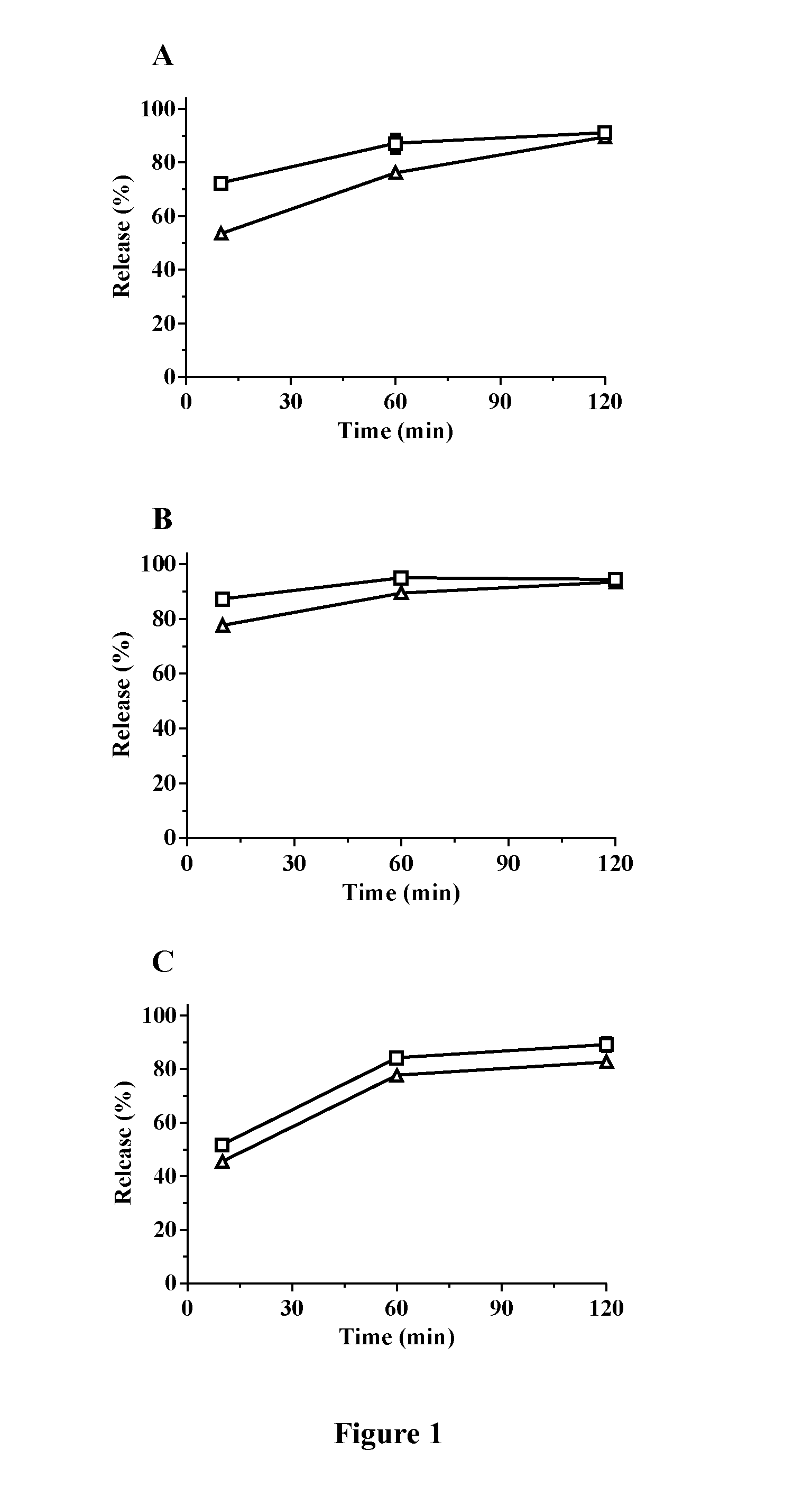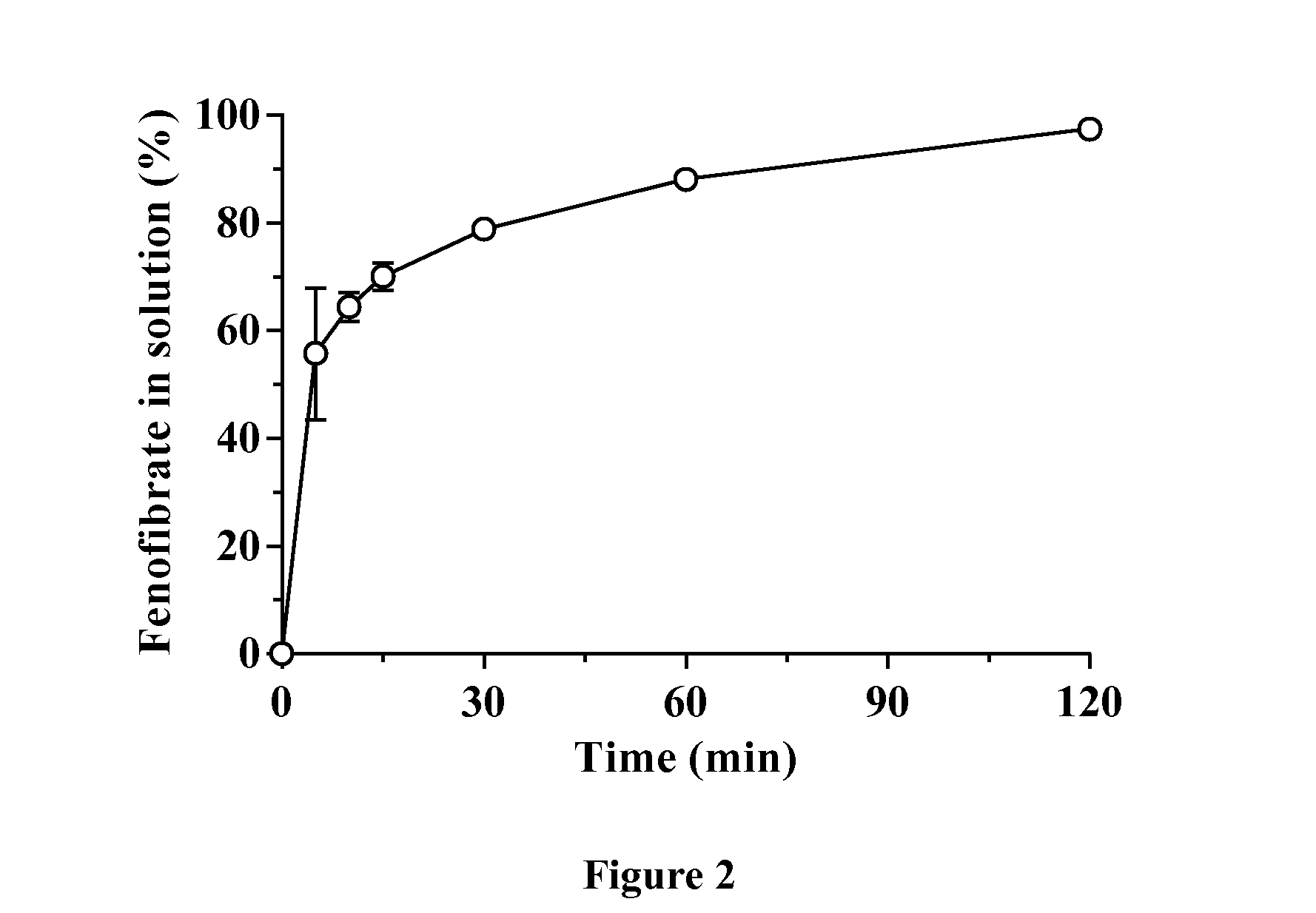Dry granulates of mesoporous silica powders
a technology of mesoporous silica and dry granulates, which is applied in the direction of biocide, plant growth regulators, pharmaceutical non-active ingredients, etc., can solve the problems of low and variable oral bioavailability, adverse effects on the pharmaceutical performance of the drug product, and variable clinical respons
- Summary
- Abstract
- Description
- Claims
- Application Information
AI Technical Summary
Benefits of technology
Problems solved by technology
Method used
Image
Examples
example 1
Flowability of Dry Granules Produced Via Slugging Using a Gamlen™ Tablet Press
[0098]An ordered mesoporous silica material, prepared according to the procedures disclosed in WO 2009 / 133100, was used throughout the experiments described in the following examples. This material, referred to hereafter as OMS-7, had a mean pore diameter of about 7 nm, a total surface area of about 900 m2 / g and a total pore volume of about 1.1 cm3 / g. Three drugs (carbamazepine, fenofibrate and itraconazole) were first loaded onto the material OMS-7 at a drug loading of 30% via impregnation with a concentrated solution in methylene chloride. The drug-loaded OMS-7 powders were then blended with additional excipients to obtain the compositions summarized in Table 2. These powder blends were slugged at 35 MPa using a Gamlen™ Tablet Press equipped with a 6 mm, flat-face, cylindrical die, and subsequently milled using mortar and pestle and passed through a 900 μm sieve. The flowability of the granules was asses...
example 2
Drug Release from Dry Granules Produced Via Slugging on a Gamlen™ Tablet Press
[0099]The granules produced via slugging using the Gamlen™ Tablet Press (composition and slugging conditions provided in Table 2) were subjected to in vitro release experiments, and the release rate compared to that of the uncompressed loaded OMS-7 powders. All release profiles were recorded using a USP II (paddle) apparatus. Release of Itraconazole was recorded in 0.01 N HCl supplemented with 1% of sodium lauryl sulfate. A dose of 12 mg itraconazole was used for a volume of 100 ml of medium. Release of fenofibrate was recorded in 50 mM phosphate buffer supplemented with 25 mM of sodium lauryl sulfate. A dose of 33.5 mg fenofibrate was used for a volume of 500 ml of medium.) Release of carbamazepine was recorded in 50 mM phosphate buffer supplemented with 0.5% of sodium lauryl sulfate. A dose of 12 mg carbamazepine was used for a volume of 100 ml of medium.
[0100]The release profiles are shown in FIGS. 1 A,...
example 3
Flowability of Dry Granules Produced Via Slugging Using a Korsch XP1 Single Punch Press
[0101]The drug fenofibrate was loaded onto OMS-7 via impregnation with a concentrated solution in methylene chloride to obtain a drug loading of 30% w / w. The drug-loaded OMS-7 powder was then blended with additional excipients to obtain the compositions summarized in Table 3. The blends were compacted into slugs at 35 MPa using a Korsch™ XP1 single punch press equipped with a flat-face, bevel-edged, round-shaped punch. The slugs were gently crushed in a mortar and subsequently passed through a 900 μm sieve. The flowability of the obtained granules was assessed via measurement of the Can Index.
TABLE 3Composition and flowability of dry granules produced via slugging usinga Korsch ™ XP1 single punch pressBlend composition (%)Drug-loadedCeolus ™Acdisol ™MagnesiumCarrDrugOMS-7KG-1000SD-711stearateIndexbFenofibrate84105120.0Fenofibrate74205120.0a Granules were prepared from slugs compacted at a targetin...
PUM
| Property | Measurement | Unit |
|---|---|---|
| pressure | aaaaa | aaaaa |
| diameter | aaaaa | aaaaa |
| pore sizes | aaaaa | aaaaa |
Abstract
Description
Claims
Application Information
 Login to View More
Login to View More - R&D
- Intellectual Property
- Life Sciences
- Materials
- Tech Scout
- Unparalleled Data Quality
- Higher Quality Content
- 60% Fewer Hallucinations
Browse by: Latest US Patents, China's latest patents, Technical Efficacy Thesaurus, Application Domain, Technology Topic, Popular Technical Reports.
© 2025 PatSnap. All rights reserved.Legal|Privacy policy|Modern Slavery Act Transparency Statement|Sitemap|About US| Contact US: help@patsnap.com


